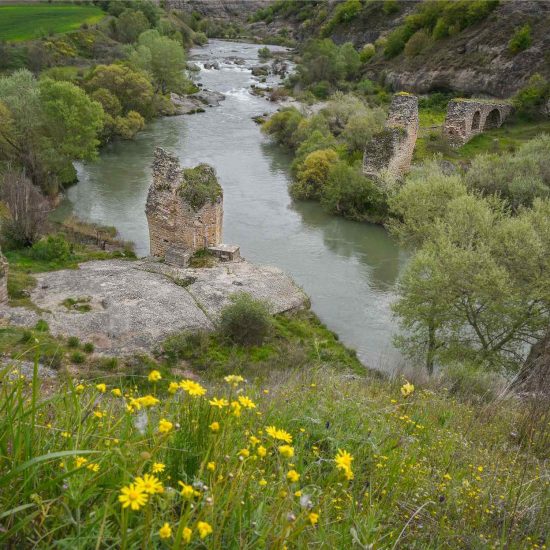Bridge of Pasha
per person
The now-ruined Bridge of Pasha over Aliakmonas River is located between the villages of Siatista and Paleokastro (Voio) in the northeast, Kokkinia and Taxiarchis (Grevena) in the southwest, close to the modern-day Egnatia Odos. It was constructed on a “key” road, e.g. a thoroughfare of importance during the Ottoman era for commercial and military use, which used to network Thessaloniki to Ioannina via the Kozani-Grevena road. Through that bridge the road connection between Epirus, Macedonia and Thessaly, but, also, Konstantinople and the countries of Central and Eastern Europe became a lot easier. The testimony of a doctor named Epirus I. Lambridis (1880) claiming that the bridge was built in 1690 by Mahmud Pasha, if accepted, confirms that the Pasha Bridge is probably the oldest known one in the prefecture of Western Macedonia. The name of the bridge was also mentioned in the journals of two famous travelers during the 19th century, F. Pouqueville and W. Leake. On its side there were a “han” (ottoman overnight inn) and a Turkish outpost used for traffic control. Based on folk tradition, its construction is associated with the legend of the master builder. In the “Arta’s Bridge” case, the master builder was forced to sacrifice his own wife in the foundations of the bridge construction aiming its stability. As a result, the human sacrifice was turned into the bridge’s ghost.
The bridge was blown up on April 14th, 1941 by British and New Zealander soldiers aiming to put an end to the German invasion to the South. Before its destruction, it was the largest bridge in Macedonia, measuring a length of more than 100m. and a height of the middle arch over 15m., built according to the pseudo-isodomic system. Today visitors can see only the remains of its pedestals and the last arch to the east. The paved roadway of the bridge had a low parapet for passers-by safety. The building blocks and the piers were built out of slate and sandstone, while poroliths were used in the arches. The four piers include protective windows/openings with arched lintels, while the arches are topped with a slightly protruding band of carved stones, a common element found in bridges of the early and later Ottoman times, in Greece and Asia Minor. Similar bands can be found in the area of Grevena, on the Aziz Aga Bridge (1727). On the pedestals, on the downstream side of the bridge, the piers have polygonal cutwaters to ease the water flow. This type of cutwaters, rarely seen in the wider area, dates back to the 12th century in Asia Minor.
Source/References
Accessibility: Limited access, there’s no wheelchair ramp.


